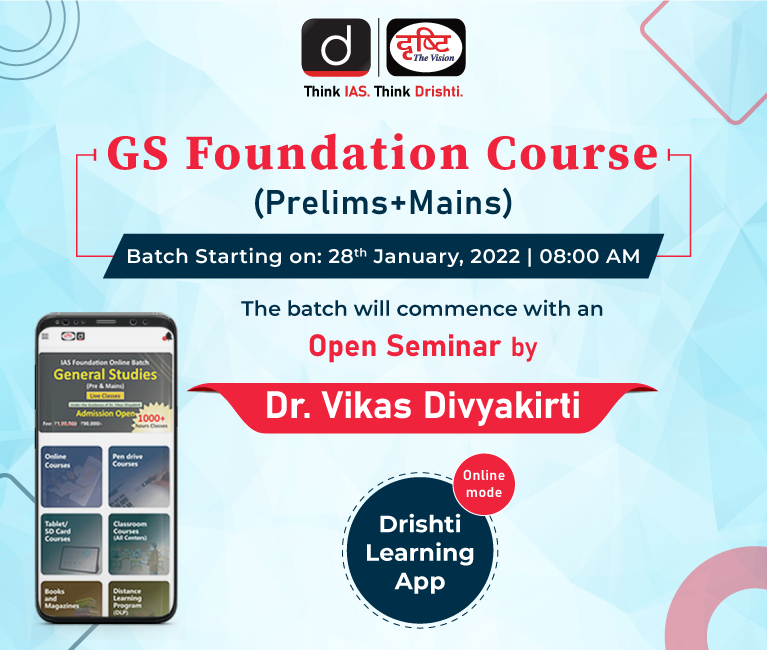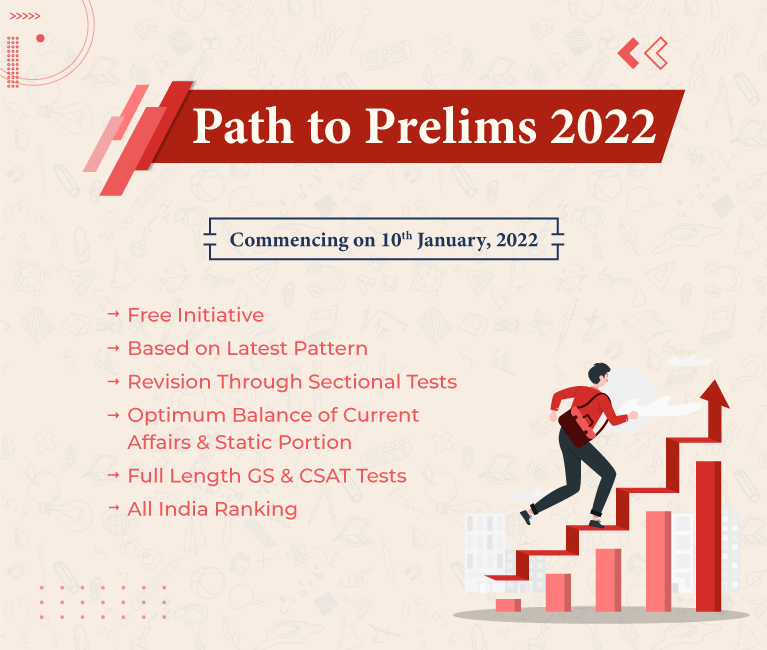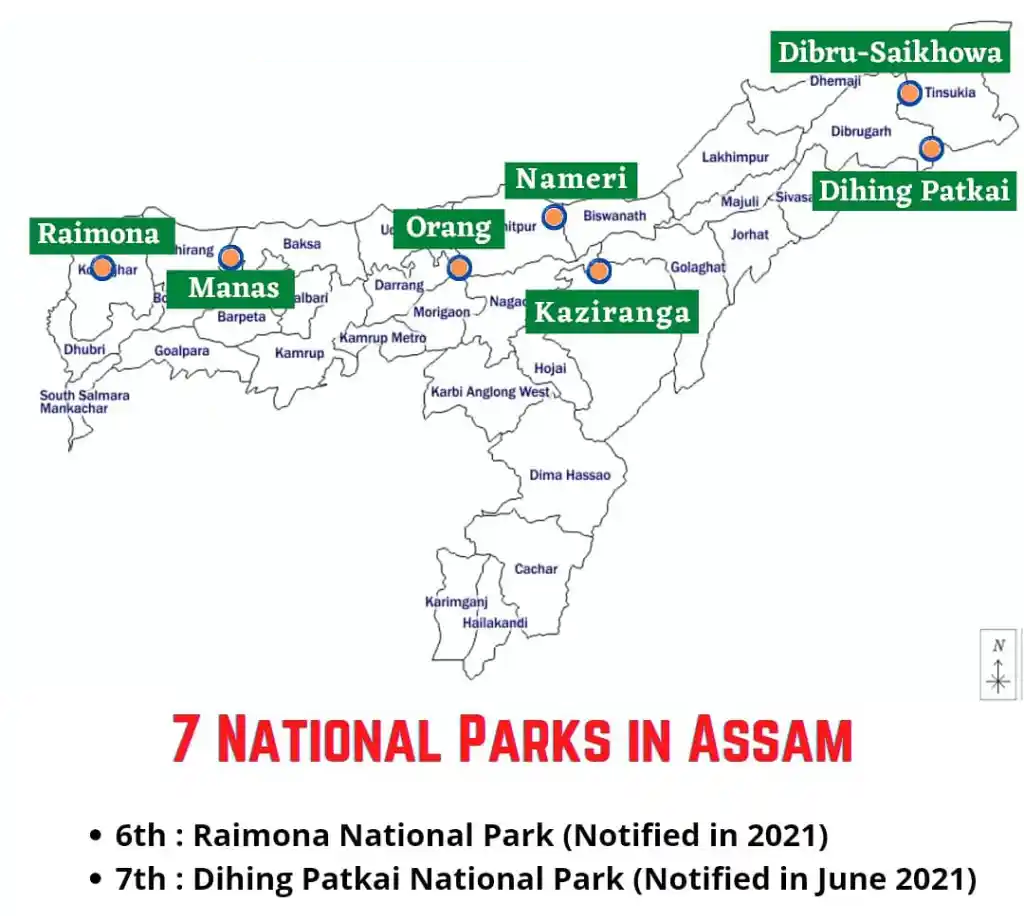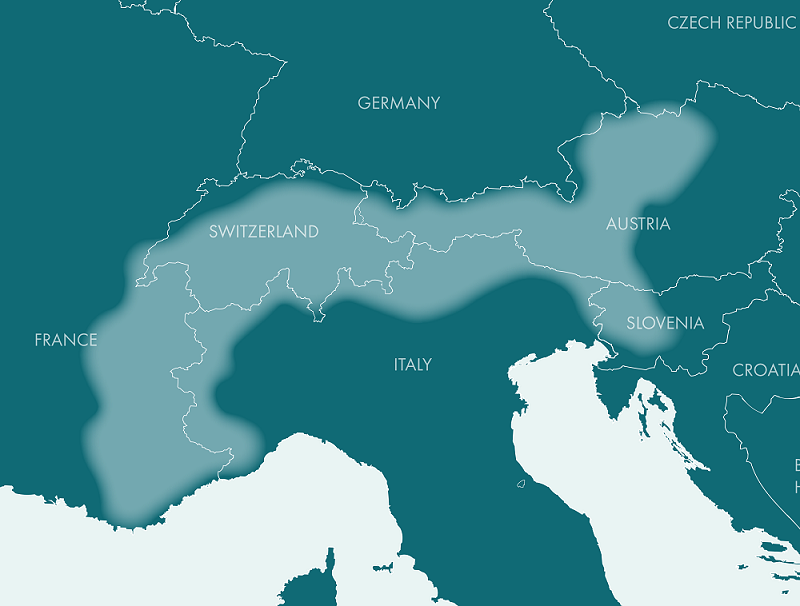Indian Economy
First Advance Estimates for GDP
For Prelims: First Advance Estimates, Gross Domestic Product, Gross Value Added, Inflation, Real GDP vs Nominal GDP
For Mains: GDP calculation mechanism
Why in News
Recently, the Ministry of Statistics and Programme Implementation (MoSPI) released the First Advance Estimates (FAE) for the current financial year (2021-22).
- According to MoSPI, India’s Gross Domestic Product (GDP) will grow by 9.2% in 2021-22.
Key Points
- First Advance Estimates of GDP:
- The FAE, first introduced in 2016-17, are typically published at the end of the first week of January.
- They are the “first” official estimates of how GDP is expected to grow in that financial year.
- Apart from it, they are also the “advance” estimates because they are published long before the financial year (April to March) is over.
- The FAE is published soon after the end of the third quarter or Q3 (October, November, December).
- However, they do not include the formal Q3 GDP data, which is published at the end of February as part of the Second Advance Estimates (SAE).
- Significance: The main significance of FAE lies in the fact that they are the GDP estimates that the Union Finance Ministry uses to decide the next financial year’s budget allocations.
- From the Budget-making perspective, it is important to estimate the nominal GDP — both absolute level and its growth rate.
- This will further help in calculating Real GDP and inflation.
- The difference between the real and nominal GDP shows the levels of inflation in the year.
- Real GDP = Nominal GDP — Inflation Rate.
- FAE Calculation:
- According to the MoSPI, the approach for compiling the Advance Estimates is based on the Benchmark-Indicator method.
- According to this, the estimates available for the previous year (2020-21 in this case) are extrapolated using relevant indicators reflecting the performance of sectors.
- The MoSPI extrapolates sector-wise estimates using indicators such as previous data of Index of Industrial Production (IIP), sale of commercial vehicles data, etc.
- Issues in Calculation of Data: The pandemic has upset many such projections because of significant fluctuations during the past couple of years.
- Due to this, the MoSPI has alerted that “these are early projections” which are liable for subsequent revisions depending on Covid, the impact on the economy and the government’s fiscal response.
- According to the MoSPI, the approach for compiling the Advance Estimates is based on the Benchmark-Indicator method.
GDP vs GVA
- GDP maps the economy from the expenditure (or demand) side — that is by adding up all the expenditures.
- GDP = private consumption + gross investment + government investment + government spending + (exports-imports).
- The Gross Value Added (GVA) provides a picture of the economy from the supply side.
- GVA maps the “value-added” by different sectors of the economy such as agriculture, industry and services.
- Gross Value Added = GDP + subsidies on products - taxes on products.
- In 2015, India opted to make major changes to its compilation of national accounts and decided to bring the whole process into conformity with the United Nations System of National Accounts (SNA) of 2008.
- Change of base year from 2004-2005 to 2011-2012.
- Replacing Factor Cost with Market Prices.
- Broadening of data pool.
- Improved coverage of financial corporations in GDP estimation (like stock brokers, stock exchanges, asset management companies, mutual funds and pension funds).


International Relations
Asian Infrastructure Investment Bank (AIIB)
For Prelims: Asian Infrastructure Investment Bank (AIIB), Asian Development Bank (ADB).
For Mains: Asian Infrastructure Investment Bank (AIIB) and projects supported by it in India
Why in News
Recently, former Reserve Bank of India (RBI) governor Urjit Patel has been appointed vice-president of the Beijing-based Asian Infrastructure Investment Bank (AIIB).
- In October 2021, the Union Minister of Finance participated in the 6th Annual Meeting of the Board of Governors of AIIB.
Key Points
- About:
- It is a multilateral development bank with a mission to improve social and economic outcomes in Asia.
- It aims to connect people, services and markets that over time will impact the lives of billions and build a better future by investing in sustainable infrastructure and other productive sectors.
- It is established by the AIIB Articles of Agreement (entered into force December 2015) which is a multilateral treaty.
- It is headquartered in Beijing (China) and began its operations in January 2016.
- Various Organs of AIIB:
- Board of Governors:
- The Board of Governors consists of one Governor and one Alternate Governor appointed by each member country. Governors and Alternate Governors serve at the pleasure of the appointing member.
- Board of Directors:
- Non-resident Board of Directors is responsible for the direction of the Bank’s general operations, exercising all powers delegated to it by the Board of Governors.
- Senior Management:
- AIIB staff is headed by the President who is elected by AIIB shareholders for a five-year term and eligible for reelection once.
- International Advisory Panel:
- The Bank has established an International Advisory Panel (IAP) to support the President and Senior Management on the Bank’s strategies and policies as well as on general operational issues.
- Board of Governors:
- Key Accomplishments of AIIB:
- Rapid Growth in Worldwide Membership:
- AIIB began operations in 2016 with 57 founding Members (37 regional and 20 non regional). By the end of 2020, it had 103 approved Members representing approximately 79% of the global population and 65% of global GDP.
- Highest Credit Rating Assigned by Three Major Rating Institutions:
- Since 2017, AIIB has received AAA ratings with a stable outlook from the top credit rating agencies— Standard & Poor’s, Moody’s and Fitch.
- Industry recognition of its sound financial standing has enabled it to expand its presence in international capital markets.
- Permanent Observer Status in the United Nations:
- In 2018, AIIB was granted Permanent Observer status in the deliberations of both the United Nations General Assembly and the Economic and Social Council, the two development-focused principal organs of the global body.
- Governance Model Enhancing Efficiency and Accountability:
- AIIB has created an effective environment for its Board of Directors to take a strategic approach to direct and oversee the work of an accountable management.
- The Bank’s Accountability Framework is an innovative governance model that positions AIIB to embed a culture of accountability throughout the organization.
- Policies and Strategies Developed or Finalized:
- Strategies for all major infrastructure sectors and for investing in equity, mobilizing private capital and financing operations in non regional members have all been approved and being implemented.
- Rapid Growth in Worldwide Membership:
- AIIB and India:
- The AIIB has approved more loans for India than any other member of the bank.
- China is its biggest shareholder and India is the second-largest.
- The AIIB has funded 28 projects in India amounting to USD6.7 billion.
- It has recently emphasised green projects and supporting public health initiatives during the Covid-19 pandemic, besides infrastructure.
- In October 2021, India applied for loans from the AIIB and Asian Development Bank (ADB) to procure 667 million doses of Covid-19 vaccines with the ADB expected to lend USD1.5 billion and the AIIB around USD500 million, under the ADB’s Asia Pacific Vaccine Access Facility (APVAX) initiative.
- Last year (2021), the AIIB also approved a USD356.67 million loan to the Indian government to support the expansion of the Chennai metro rail system.
- The AIIB has approved more loans for India than any other member of the bank.
Governance
Citizenship (Amendment) Act, 2019
For Prelims: Committee on Subordinate Legislation, National Register of Citizens, Assam Accord of 1985
For Mains: Features and issues associated with Citizenship (Amendment) Act, 2019
Why in News
Recently, the Ministry of Home Affairs (MHA) missed the deadline of notifying rules under the Citizenship (Amendment) Act, 2019 (CAA).
- Amidst the concerns related to CAA and for better clarity, the two parliamentary committees (committee on subordinate legislation) in the Lok Sabha and the Rajya Sabha had sought MHA to frame the rules that will govern the CAA.
- If the government does not make rules and regulations, a law or parts of it will not get implemented. The Benami Transactions Act of 1988 is an example of a complete law remaining unimplemented in the absence of regulations.
Committee on Subordinate Legislation
- The Committee scrutinizes and reports to the House whether the powers to make regulations, rules, and sub-rules, by-laws etc. conferred by the Constitution or delegated by Parliament are being properly exercised by the executive within the scope of such delegation.
- This committee exists in both houses.
- It has 15 members.
- A Minister is not nominated to this Committee.
Key Points
- About CAA:
- The CAA provides citizenship on the basis of religion to six undocumented non-Muslim communities (Hindus, Sikhs, Buddhists, Jains, Parsis and Christians) from Pakistan, Afghanistan and Bangladesh who entered India on or before 31st December, 2014.
- It exempts the members of the six communities from any criminal case under the Foreigners Act, 1946 and the Passport Act, 1920.
- The two Acts specify punishment for entering the country illegally and staying here on expired visas and permits.
- Associated Concerns with CAA:
- Targeting a Particular Community: There are apprehensions that the CAA, followed by a country-wide compilation of the National Register of Citizens (NRC), will benefit non-Muslims excluded from the proposed citizens’ register, while excluded Muslims will have to prove their citizenship.
- Issues in the North-East: It contradicts the Assam Accord of 1985, which states that illegal migrants, irrespective of religion, heading in from Bangladesh after 25th March, 1971, would be deported.
- There are an estimated 20 million illegal Bangladeshi migrants in Assam and they have inalienably altered the demography of the state, besides putting a severe strain on the state’s resources and economy.
- Against Fundamental Rights: Critics argue that it is violative of Article 14 of the Constitution (which guarantees the right to equality and is applicable to both the citizens and foreigners) and the principle of secularism enshrined in the preamble of the constitution.
- Discriminatory in Nature: India has several other refugees that include Tamils from Sri Lanka and Hindu Rohingya from Myanmar. They are not covered under the Act.
- Difficulty in Administration: It will be difficult for the government to differentiate between illegal migrants and those persecuted.
- Hampering Bilateral Ties: The Act throws the light on the religious oppression that has happened and is happening in these three countries and thus, may worsen our bilateral ties with them.
Way Forward
- India has been a rich civilization. Therefore it is a novel effort to protect those who are prosecuted in its neighborhood. However, the methods must be in accordance with the spirit of the Constitution.
- Thus, MHA should notify the CAA rules with utmost transparency and clear the apprehensions associated with CAA.


Governance
India’s e-passports: Passport Seva Programme (PSP)
For Prelims: Passport Seva Programme (PSP), e-passports
For Mains: e-passports and its significance
Why in News
Recently, the government of India has announced that it will soon start issuing ePassports to citizens applying for a new passport or renewing their expiring passport.
Key Points
- About:
- The announcement is under an agreement signed between the Ministry of External Affairs (MEA) and Tata Consultancy Services Limited (TCS) which will facilitate the next phase of the PSP (Passport Seva Programme) termed PSP-V2.0.
- The MEA-TCS collaboration has been a part of the passport process since 2008 and has helped in increasing digitisation of the complex process that requires multiple stakeholders across the spectrum of the vast Government network.
- Tata Consultancy Services will ensure “support functions” like “citizen interface, technology backbone, call centres, training and change management”.
- The Government will exercise “all sovereign and security related functions” in the process of issuing passports.
- The announcement is under an agreement signed between the Ministry of External Affairs (MEA) and Tata Consultancy Services Limited (TCS) which will facilitate the next phase of the PSP (Passport Seva Programme) termed PSP-V2.0.
- Passport Seva Programme (PSP):
- PSP is one of the several Mission Mode Projects (MMPs) of India.
- A Mission Mode Project (MMP) is an individual project within the National e-Governance Plan (NeGP) that focuses on one aspect of electronic governance, such as banking, land records or commercial taxes etc.
- PSP is one of the several Mission Mode Projects (MMPs) of India.
- PSP-V2.0:
- The PSP-V2.0 is an expansion and improvement of the PSP-V1.0, an e-government tool that brought new changes to the delivery of passport-related services to individuals.
- The new initiative is aimed at creating a digital platform that would be “transparent, more accessible and reliable” and that it would be backed by a trained workforce.
- This will create a state-of-the-art digital ecosystem, overhaul existing processes and integrate various wings of Government that are involved in issuance of passports.
- New Features of PSP-V2.0:
- The new programme is expected to have technology upgrades including the use of the latest biometrics technology, Artificial Intelligence, Advance Data Analytics, Chat-Bot, Auto-response, Natural Language Processing, Cloud Enablement.
- The newest feature under the PSP-V2.0 will be the issuance of the new generation of passports called e-passports.
- E-passports and its Significance:
- ePassport is an upgrade to the traditional passport and is aimed at making it more secure and ensuring smooth passage through immigration posts globally.
- The ePassports will be embedded with a chip that will include personal details of the holder including biographical information.
- The software for the ePassport has been developed by IIT Kanpur and the National Informatics Centre (NIC).
- NIC under the Ministry of Electronics and Information Technology (MeitY) is the technology partner of the Government of India. NIC was established in the year 1976 with the objective to provide technology-driven solutions to Central and State Governments.
- It will ease immigration process across the world and will also increase digital safety for the passport holders.
- The e-passports will follow the International Civil Aviation Organisation (ICAO) standards, and will be tougher, as well as harder to destroy.
- ICAO is a United Nations (UN) specialized agency, established in 1944, which laid the foundation for the standards and procedures for peaceful global air navigation. India is its member.


Agriculture
Sweet Revolution
For Prelims: Mobile Honey Processing Van, National Beekeeping and Honey Mission, Beekeeping, Sweet Revolution
For Mains: Doubling Farmers’ Income, Sweet Revolution, Promoting Apiculture
Why in News
Recently, the Khadi and Village Industries Commission (KVIC) has launched the country’s first Mobile Honey Processing Van at Village in Uttar Pradesh.
- Mobile Honey Processing Van that will process beekeepers’ honey at their doorsteps and thus save them the hassle and the cost of taking the honey to processing plants in far off cities for processing.
- This initiative is taken in pursuance of “Sweet Kranti” (Sweet Revolution).
Key Points
- Benefits of ‘Mobile Honey Processing Van’:
- The transportation of honey to processing plants is an expensive affair for small farmers and beekeepers.
- To avoid high transportation and processing costs, a majority of beekeepers would sell their raw honey to the agents at their farms themselves at a very low price.
- The Processing Van will reduce the honey extraction and processing cost to the beekeepers.
- This will also eliminate any scope for adulteration of honey as the processing will be done at the doorsteps of the beekeepers and farmers.
- The transportation of honey to processing plants is an expensive affair for small farmers and beekeepers.
- About ‘Sweet Revolution’:
- It is an ambitious initiative of the Government of India for promoting apiculture, popularly known as 'beekeeping'.
- To provide a booster shot to Sweet Revolution, the government launched the National Beekeeping and Honey Mission in 2020 (under the Ministry of Agriculture and Farmers Welfare).
- It aims to accelerate the production of quality honey and other related products.
- The demand for good quality honey has grown over the years as it is considered a naturally nutritious product.
- Other apiculture products such as royal jelly, beeswax, pollens, etc., are also used extensively in different sectors like pharmaceuticals, food, beverage, beauty, and others.
- Under the Honey Mission, the KVIC provides the farmers or beekeepers –
- Practical training about the examination of honeybee colonies,
- Identification and management of bee enemies and diseases along with the management of bee colonies in all seasons.
- Acquaintance with apicultural equipment’s and
- Honey extraction and wax purification.
- The Honey Mission programme was launched by KVIC during 2017-18.
- Technology intervention through this mission will ensure bee conservation, prevent diseases or the loss of bee colonies and provide quality and quantity of apiculture products.
- Farming practices will yield superior-quality honey and other products for the domestic as well as international market.
- Beekeeping is a low investment and highly skilled enterprise model, in which technology application has emerged as a great enabler for socio-economic growth.
- Scaling up beekeeping will double farmers' income, generate employment, ensure food security and bee conservation, and increase crop productivity.
- It is an ambitious initiative of the Government of India for promoting apiculture, popularly known as 'beekeeping'.
Khadi and Village Industries Commission (KVIC)
- KVIC is a statutory body established under the Khadi and Village Industries Commission Act, 1956.
- The KVIC is charged with the planning, promotion, organisation and implementation of programmes for the development of Khadi and other village industries in the rural areas in coordination with other agencies engaged in rural development wherever necessary.
- It functions under the Ministry of Micro, Small and Medium Enterprises.


Important Facts For Prelims
Gharials
Why in News
The Assam government has issued a preliminary notification to make Orang National Park more than thrice its existing size for conserving Gharials.
Key Points
- About:

- Gharials, sometimes called gavials, are a type of Asian crocodilian distinguished by their long, thin snouts.
- Crocodilians are a group of reptiles that includes crocodiles, alligators, caimans, and more.
- India has three species of Crocodilians namely:
- Gharial (Gavialis gangeticus): IUCN Red List- Critically Endangered
- Mugger crocodile (Crocodylus palustris): IUCN- Vulnerable.
- Saltwater crocodile (Crocodylus porosus): IUCN- Least Concern.
- All the three are listed on Appendix I of CITES and Schedule I of the Wild Life (Protection) Act, 1972.
- Exception: Saltwater Crocodile populations of Australia, Indonesia and Papua New Guinea are included in Appendix II of CITES.
- Gharials, sometimes called gavials, are a type of Asian crocodilian distinguished by their long, thin snouts.
- Habitat of Gharials:
- Natural Habitat: Fresh waters of the northern part of India.
- Primary Habitat: Chambal river (a tributary of Yamuna).
- Secondary Habitat: Ghagra, Gandak river, Girwa river (Uttar Pradesh), the Ramganga river (Uttarakhand) and the Sone river (Bihar).
- Significance: Population of Gharials are a good indicator of clean river water.
- Conservation Efforts:
- Kukrail Gharial Rehabilitation Centre in Lucknow, Uttar Pradesh, National Chambal Sanctuary (Gharial Eco Park, Madhya Pradesh).
- Threats:
- Increased river pollution, dam construction, massive-scale fishing operations and floods.
- Illegal sand mining and poaching.
Orang National Park
- The Orang National Park also known as Rajiv Gandhi Orang National Park is located on the north bank of the Brahmaputra River in the Darrang and Sonitpur districts of Assam and covers an area of 78.81 square kilometers.
- It was established as a wildlife sanctuary in 1985 but was declared as a National Park in 1999. It is also the 49th Tiger Reserve of the country, being notified in 2016.
- It is also known as the mini Kaziranga National Park since the two parks have a similar landscape made up of marshes, streams, and grasslands.
- It is the only stronghold of rhinoceros on the north bank of the Brahmaputra river.
Other Protected Areas in Assam
- Dibru-Saikhowa National Park,
- Manas National Park,
- Nameri National Park,
- Kaziranga National Park.
- Dehing Patkai and Raimona National Parks
- Barnadi Wildlife Sanctuary


Important Facts For Prelims
Collective Security Treaty Organisation
Why in News
Recently, Kazakhstan’s President called on the Collective Security Treaty Organisation (CSTO) to help manage ongoing protests in the country.
Key Points
- About:
- It is an intergovernmental military alliance (six countries) that came into effect in 2002.
- It started storming into Kazakhstan to curb the protests which threatened the very existence of the regime that has ruled the Central Asian country since it became an independent republic in 1991.
- History:
- It is an intergovernmental military alliance that was signed on 15th May 1992.
- In 1992, six post-Soviet states belonging to the Commonwealth of Independent States—Russia, Armenia, Kazakhstan, Kyrgyzstan, Tajikistan, and Uzbekistan—signed the Collective Security Treaty.
- This is also referred to as the “Tashkent Pact” or “Tashkent Treaty”.
- Three other post-Soviet states—Azerbaijan, Belarus, and Georgia—signed the next year and the treaty took effect in 1994.
- Five years later, six of the nine—all but Azerbaijan, Georgia, and Uzbekistan—agreed to renew the treaty for five more years, and in 2002 those six agreed to create the CSTO as a military alliance.
- Headquarters:
- The headquarters is located in the Russian capital of Moscow.
- Members:
- Current members are Armenia, Belarus, Kazakhstan, Kyrgyzstan, the Russian Federation and Tajikistan.
- Objectives:
- To strengthen peace, international and regional security including cybersecurity and stability, the protection on a collective basis of the independence, territorial integrity and sovereignty of the member states.


Important Facts For Prelims
First Multi-Dimensional Adventure Sports Expedition: NIMAS
Why in News
Recently, the Defence Minister flagged-in India’s first multi-dimensional adventure sports expedition conducted by National Institute of Mountaineering and Allied Sports (NIMAS) in France.
Key Points
- About:
- The expedition was conducted in November 2021 and the team was led by Director NIMAS comprising 12 people - eight Army personnel and four youths of Arunachal Pradesh.
- The expedition team carried out over 250 kilometres of winter trekking in the Alps Mountain Ranges, which included Tour De Mont Blanc trek covering the French, Swiss and Italian Alps.
- National Institute of Mountaineering and Allied Sports:
- It is an advanced sports training institute located in the West Kameng district of Arunachal Pradesh.
- It operates under the control and superintendence of the Ministry of Defence.
- The institute offers training across land, air and water, a first of its kind that allows civilians to experience challenges across a variety of outdoor surfaces as well as pursue a career in adventure sports. It provides structured training to defence personnel as well.
Alps
- Alps is a small segment of a discontinuous mountain chain that stretches from the Atlas Mountains of North Africa across southern Europe and Asia to beyond the Himalayas.
- The Alpine region encompasses eight European countries: Austria, France, Germany, Italy, Liechtenstein, Monaco, Slovenia and Switzerland.
- The Alps are an interzonal mountain system (Orobiome), or a “transition area” between Central and Mediterranean Europe.
- Mont Blanc is the highest peak.
- Though they are not as high and extensive as other mountain systems uplifted during the Paleogene and Neogene periods (i.e., about 65 million to 2.6 million years ago)—such as the Himalayas (great mountain system of Asia) and the Andes and Rocky mountains (in South America and North America respectively) —they are responsible for major geographic phenomena.
- The Alpine crests isolate one European region from another and are the source of many of Europe’s major rivers.
- Waters from the Alps ultimately reach the North, Mediterranean, Adriatic, and Black seas.








